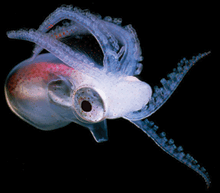
Things have gone swimmingly with my strain construction plans, and indeed today I am extracting DNA that will presumably be sequenced. To recap, I made a couple of clinical isolates (86-028NP and PittGG) resistant to novobiocin (NovR) by transforming them with a bit of left-over NovR allele of the former postdoc. I then isolated the new strains’ DNA, and used these to transform the standard KW20 Rd strain. By selecting for NovR, we can be certain that the clones I pick took up DNA and recombined it into their genomes.
One technical issue arose, however, which required a little bit of thought: Should I have streaked for single colonies? I.e. once I had my transformants, it might be a good idea to streak out individual colonies to make sure I purified them away from any background or broke apart any doublet colonies. No big deal, but after talking it out with Rosie, we decided to skip it. Why? So that we might get lucky and distinguish recombination followed by mismatch repair versus recombination followed by segregation. In the following figures, I illustrate what I mean by this…
In this first one, the donor DNA is shown in red, and the recipient chromsome is shown in two colors, blue and green, to distinguish the strands. The lowercase letters indicate polymorphic sites in the donor genome. Little a is meant to be the selectable marker, in this case an allele of gyrB:
 Donor DNA is incubated with competent recipient cells, and recombination of single-stranded DNA leaves patches of heteroduplex in the genome, shown as small red patches on either the blue or green strands.
Donor DNA is incubated with competent recipient cells, and recombination of single-stranded DNA leaves patches of heteroduplex in the genome, shown as small red patches on either the blue or green strands.After this, the cells have a chance to perform mismatch correction to fix any heteroduplex. I select for cells that have little a by plating to novobiocin plates, so only cells that end up a/a will survive an make colonies. (I am not going to show any examples of restoration repair, in which donor alleles are repaired back into recipient alleles… this will be invisible in our analysis.)
In the below example, I show the A/a and B/b heteroduplexes getting mismatch repaired into a/a and b/b, whereas C/c and D/d heteroduplexes remain unrepaired (they escape correction). What will happen in such as case is the generation of a sectored colony, in which (in principle) half the cells would have one genotype and the other half a different genotype:
 In the above example, the original transformant segregates the c and d alleles into different cells, while a and b end up in all cells. If the whole resulting colony is grown up and sequenced, the a and b alleles will be the only ones observed, while at the other two loci, there will be a mix of C and c, along with a mix of D and d. We wouldn’t be able to tell “phase”, i.e. whether c and d were on the same or different chromosomes, unless we did streak for singles and the sequenced several clones. But as a first pass, this could be a really interesting analysis. It will also serve as excellent proof-of-principle for our more intense sequencing plans.
In the above example, the original transformant segregates the c and d alleles into different cells, while a and b end up in all cells. If the whole resulting colony is grown up and sequenced, the a and b alleles will be the only ones observed, while at the other two loci, there will be a mix of C and c, along with a mix of D and d. We wouldn’t be able to tell “phase”, i.e. whether c and d were on the same or different chromosomes, unless we did streak for singles and the sequenced several clones. But as a first pass, this could be a really interesting analysis. It will also serve as excellent proof-of-principle for our more intense sequencing plans.There is a caveat, however, which means we need to get a little bit lucky to be able to distinguish these phenomena (mismatch repair versus segregation). We won’t see two different genotypes, if the A/a heteroduplex isn’t mismatch corrected:
 The issue isn’t that segregation didn’t happen; the problem is that one of the segregants dies under selection for little a.
The issue isn’t that segregation didn’t happen; the problem is that one of the segregants dies under selection for little a.Thus, if we see a pure genotype, then either all mismatches were corrected, or our selectable marker didn’t mismatch correct.
When I pre-screen my transformants to make sure they’re not spontaneous mutants, I might be able to pick a colony where I think segregation is occurring. If I get the standard sequencing traces back and see mixed bases in the chromatograms that corresponde to donor and recipient alleles, I’ll pick that kind of clone for sequencing…
One sort of sad note here, in terms of the more distant future, is that mismatch repair mutants, which should be quite useful for understanding transformation, will need to be transformed without selection if we hope to recover isolated segregants from individual transformants.

No comments:
Post a Comment